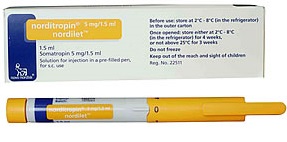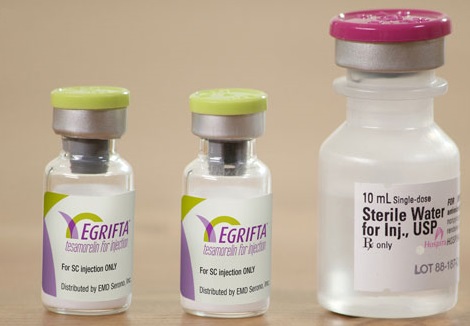

- HGH Deficiency
- So you took a look at yourself in a mirror recently and your heart sank by what you saw.
- Can Human Growth Hormones Really Reverse the Signs of Aging
- We hear about HGH or human growth hormone supplements far more often than we did just a few years ago.
- HGH Benefits for Men
- There are several benefits that males can derive from HGH use, although these are mostly off-label.
- How to Handle an HGH Deficiency in Adults?
- our physician tells you that you have a human growth hormone deficiency or HGH deficiency – now what? What does this mean?
- HGH Use for Bodybuilding
- Human growth hormone (HGH) is considered highly essential for the health and wellbeing of an average person.
- GenF20Plus Double Blind Clinical Study Shows Results That are Promising
- The market is full of unproven HGH products, but only the manufacturer of Genf20 Plus has taken the time to conduct a double blind clinical study.
HGH Injections: All That You Need To Know About Them
It has long been a dream of humans to have a wonder drug that would ensure we remained energetic and youthful forever – you could say we were looking for the ‘elixir of youth’ – a simple pill to swallow or a magic potion to drink. There are a number of people who mistakenly think that HGH injections just might be the secret to eternal youth.
However, there are many serious things to consider before you use HGH injections such as Saizen, Norditropin, Tev-Tropin, Omnitrope and Genotropin. This article will focus on an open dialogue about HGH science, HGH injections, some of the most popular brands, how they are created, and concerns about the side effects associated with HGH. We’ll also discuss prescription HGH releaser injections like Egrifta and their effects.
HGH Injections – Why Use Them
The pituitary gland, which is located at the brain’s base, produces HGH (human growth hormone) and secretes it into your bloodstream in a regular systematic cycle, mostly while you sleep. When we were children our brains produces lots of HGH to help us to grow. While we grow, HGH keeps our tissues, cells, and organs properly functioning.
However, by the time we are in our 20s the body is producing
less HGH and by the time we are in our 60s our body is hardly
producing human growth hormone. One source (New England Journal
of Medicine) claims that HGH production drops from 700 units/day
to 400 units/day and even lower than that. Scientists have found
evidence that this decline is directly linked to aging and the
problems associated with aging. Many are theorizing that
increasing the HGH in the body will lead to
HGH benefits like weight loss and the reversing of many
aging symptoms.

Some medical conditions are related to an HGH deficiency. There are a number of conditions that affect children that are the result of an HGH deficiency. In kids, an HGH deficiency is seen in disorder like Turner Syndrome, Prader Willi Syndrome, Noonan Syndrome, idiopathic short stature and chronic kidney disease. In infants that are small for their gestational age short stature Homeobox, containing gene deficiency is common. Children who have HGH deficiencies as adults will often suffer memory loss, male baldness, cardiac dysfunction, reduced sex drive, higher than average body fat, lower energy, less muscle mass, and raised cholesterol.
There are only a few adult conditions, one of which is brain tumors, another is having had radiation treatments can have an HGH deficiency. A number of authoritative sources claim that HGH deficiencies can cause delayed puberty, lack of growth, weight gain, sparse hair, maxillary hypoplasia, and frontal recession.
Those with AIDS, children and adults, who are suffering from wasting can benefit from HGH replacement.
When artificial HGH injections are used to replace some of the HGH deficiency and can reduce the effects of these various disorders.
The Manufacturing of HGH Injections
The first HGH injections took place back in the 1950’s. Back then, the hormone was actually extracted from cadavers’ pituitary glands and injected into individuals who were suffering from a growth hormone deficiency condition. However, at that time, the supply was limited and only a handful of doctors were even trained to administer the hormone. According to Wikipedia in the United States, only approx. 7,700 children who receive the injections and only approx. 27,000 globally were able to receive the injections between 1963 and 1985.
In addition, scientists soon discovered that using the HGH from corpses increased the risk for those injected to develop Creutzfeldt-Jacob disease, a fatal condition that is similar to ‘mad cow disease.’ From 1985 to 2003, 26 of the 7,700 injected with HGH from cadavers developed Creutzfeldt-Jacob disease.
In 1981, Kabi and Genentech created recombinant human growth hormone (rHGH), which is synthetic HGH that is made using recombinant DNA technology. One authority’s explanation says DNA sequences from varying sources are cut from the original molecules and then they are joined in ways that are not naturally found in. An outside source of DNA is tied to the host DNA sequence causing the host DNA to replicate. Using this method creates an environment where both DNA sets can be replicated simultaneously by the host.
With rHGH, the human DNA is placed in bacteria and then the protein is constantly replicated. Through this process a form of rHGH is created. This form is able to work in the body. It is quickly reproduced and it’s relatively easy for this process to happen. In the time since rHGH was initially produced to date no one who received these injections has been diagnosed with Creutzfeldt-Jacob disease.
The Ingredients in HGH Injections
Back in 1985, Genentech created the first brand of HGH injections called Protropin. It came off the market in 2004. This particular product was made from somatrem. This is a kind of synthetic growth hormone containing 192 amino acids. That’s the main 191 acids found in somatropin, which is the common HGH form, plus methionine, which helps to construct proteins as well as providing methyl and sulfur to regulate the metabolism.
Mayo reported that human DNA is tied to e-coli bacteria for Protropin rHGH to be created. Protropin is a white powder, containing sodium phosphates and somatrem, mannitol. It is designed to be injected underneath the skin. It is purified using benzyl alcohol in combination with bacteriostatic water and occasionally phosphoric acid is also used if the pH needs to be adjusted (info from RXlist.com)
The Mayo Clinic goes on to explain that Somatropin is a kind of synthetic HGH that has only the original 191 amino acids, which is the number that natural HGH produced by your body has. However, just like Protropin it is created by tying the DNA of humans to e-coli.
The most popular somatropin brands include Saizen, Humatrope, Genotropin, Norditropin, Omnitrope, Tev-Tropin and Accretropin. All of these products contain sodium chloride, mannitol, phenol, sodium dihydrogen phosphate dihydrate, benzyl alcohol sucrose, Bacteriostatic Water, glycine, dibasic sodium phosphate, disodium phosphate anhydrous, sodium dihydrogen phosphate anhydrous, along with other ingredients. Most of rHGH products come in the form of white powder which then needs to be mixed with the sterile liquid provided before it is subcutaneously, injected. However, most HGH injections brands are now coming in the form of premixed pens that do not require any mixing.
Understanding What Growth Hormone Releasing Hormone Is
Products like Egrifta contain GHRH (growth hormone releasing
hormone). According to Wikipedia unlike Genotropin and Protropin,
these injections don’t replace deficient levels of HGH with rHGH.
Rather, they contain an artificially made HGH releasing factor,
referred to as HGHRF. Let’s explain further. The hormone GHRH is
made up of 44 amino acids that the hypothalamus in our brains
produces. In regular cycles, it travels from the hypothalamus to
the pituitary gland, which then stimulates the production of
HGH, and it also promotes slow wave sleep during the period when
the pituitary gland is releasing the highest levels of HGH.

These are not designed to insert HGH into the human body. Rather their purpose is to encourage the secretion of the hormone by a pituitary gland that is fully operational. They are not intended to treat HGH deficiencies but rather they are most often prescribed for conditions such as lipodystrophy or in degenerative human fat tissue often seen in those with HIV.
According to the experts, contained in Egrifta is an acetate salt, tesamorelin, that is the identical sequence of amino acids as GHRH is and mannitol. Other sources note tesamorelin may also contain dibasic sodium phosphate, monobasic sodium phosphate, and sodium chloride. Acetate in the powder form is intended for injection under the skin. Some of the older products like Sermorelin, which is also an artificial GHRH form, although it has only 29 amino acids rather than the original 44. According to Wikipeida.org, this is the shortest GHRH fragment that is completely functional and still used to test HGH secretion levels.
The Concerns Relating to rHGHRF and rHGH
rHGH injections have been approved by the US FDA has approved in patients who have growth hormone deficiency disorders. Experts advise these injections are legally available only through a doctor’s prescription and the FDA plans to prosecute anyone who obtains them from an illegal source. The penalties are heavy and include jail time.
Concerns remain even for those patients who are taking rHGH injections legally. One expert says that for children these injections can occur daily for the duration of the children’s growth period. For cases of deficiency that are more severe injections may have to have injections for the remainder of their life. This cost can range from $10,000 to more than $30,000 US annually.
While the majority of children will receive treatment for their HGH deficiencies; however, adults will often suffer with no treatment. One of the main reasons is that adults don’t want to have regular injections. In addition, a fact one shouldn’t forget, is that some scientists feel that rHGH therapy is still unproven and not enough is known about it at this time. A number of endocrinologists won’t prescribe the injections for adult patients except in the most severe of cases because of the possible HGH side effects.
Another concern that needs to be addressed is the seriousness of the side effects associated with the use of rHGHRF injections and rHGH injections. According to an expert, pregnant women shouldn’t take Egrifta or any products containing tesamorelin, because they can lead to birth defects.
For those that suffer from allergies to ingredients used in the injections, those with respiratory issues, kidney/liver disease, recent trauma, surgery, diabetes, carpal tunnel, cancer, edema, retinopathy, or pressure in the head you should always have a full consultation with your doctor prior to taking rHGHRF. There are a number of sources claiming that these products can result in fluid retention, changes in urine sugar levels or blood sugar levels, rashes, hives, itching skin, redness, swollen feet, hands, face, lips or shortness of breath. Those all sound pretty terrifying.
Some of the more common side effects include bleeding, trouble moving, blistering, coldness, infection, skin discoloration, stinging, inflammations at injection site, pain in your muscles, joints, legs or arms. Dizziness, irregular pulse, joint swelling, nervousness, weakness in your limbs, pounding ears, headache, sour stomach, loss of pleasure, muscle spasms, nausea, fatigue, insomnia, inability to concentrate, upper abdominal pain, numbness or tingling, blurred vision, and depression are more of the more common side effects.
In addition, there are a number of side effects that are also associated with rHGH injections. Some experts claim these include bleeding gums, swelling of the limbs and face, nosebleeds, dizziness, joint pain, coughing up blood, difficulty moving, red/dark urine/stools, skin discoloration, tingling sensation in extremities, and difficulty moving.
Rarer side effects include personality changes, damage to your vision, bone fractures, bone pain, constipation, chills, dry mouth, headaches, fever, confusion increase in hunger/thirst, increase in urination, rapid pulse, joint pain, indigestion, loss of consciousness, weakness, seizures, loss of appetite, jaundice, fatigue, skin lesions, tumors, breathing difficulties, as well as breast swelling in males/females. It can cause pancreatitis, fluid retention, and head pressure. There is some evidence that injections have the potential to affect unborn children and nursing babies. However the evidence is inconclusive as of yet. If you want more information the side effects and the risks associated with HGH injections you can r read more here.
Experts are warning anyone who is thinking about rHGHGF or rHGH that they should consult with their doctors before they begin treatment. Even though these injections are not ‘the fountain of youth,’ they certainly are important to those who are able to grow and become strong. If you are considering HGH injections simply to feel younger or lose weight, and you do not suffer from a severe HGH deficiency then choosing a natural HGH releaser like GenF20 Plus HGH should offer you just what you need.

- "A lot of great info on HGH therapy and HGH supplements"
- Stan (Fort Lauderdale)
- "I almost started using prescription HGH injections but because of the high cost involved and the long list of side effects I opted for Genf20 plus instead and I was glad I did!"
- Jenifer (Los Angeles)
- "Before buying Genf20 Plus You must read the reviews at genf20plus.info"
- Eric (San Diego)
- "Thanks for showing both the benefits and the risks of using HGH"
- Nancy (NYC)
- Latest Articles
- All You Need to Know About HGH Replacement Therapy
- Human growth hormone (HGH) is required for some essential functions in the body.
- Maximize Your HGH Levels With Genf20 Plus, Diet and Lifestyle Choices
- Taking the HGH supplement can also help your pituitary gland to produce more HGH.
- Does Human Growth Hormone Work for Weight Loss?
- In addition to using HGH supplements you should consider intensive exercise and intermittent fasting.
- Gynecomastia in Men and How HGH Affects It
